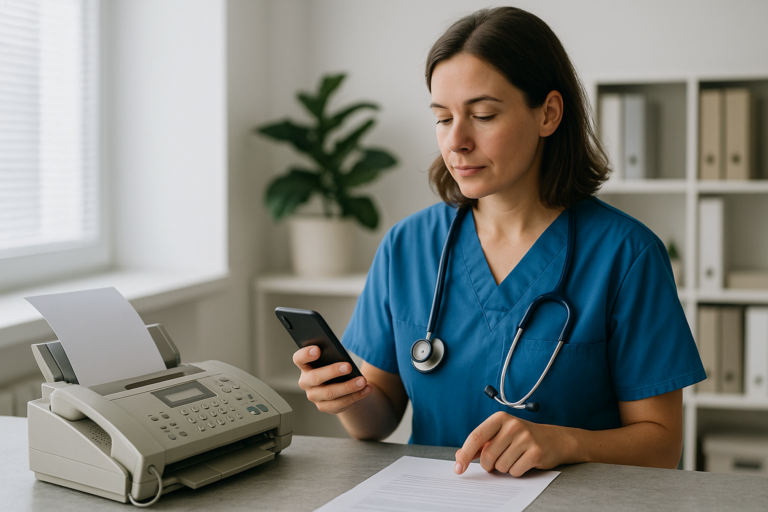At best, robocalls are a nuisance—a waste of time, a distraction.
But at worst, robocalls can have far more serious repercussions—particularly when they’re carried out by callers with malicious intent, such as scammers who are misrepresenting themselves in an effort to steal credit card numbers and other sensitive information like social security numbers.
And within the healthcare industry, the negative repercussions extend even further. In addition to patients being targeted, hospitals and other healthcare organizations that are bombarded with robocalls have to deal with disruption to their workflow and their ability to properly serve patients, which can be life-threatening when this interruption impedes with the provider’s ability to respond to emergency situations.
Fortunately, the federal government is cracking down on illegal robocalls.
New robocall law hikes fines & enlists the help of phone service providers
President Trump recently signed a new law—the Telephone Robocall Abuse Criminal Enforcement and Deterrence Act (TRACED)—which increases fines for illegal robocalls from $1,500 to up to $10,000 per call. Additionally, the new law mandates phone service providers to speed up their implementation of “call authentication technologies,” which allows them to identify and stop spam calls before they ever reach the phone companies’ customers.
The robocall law additionally requires the Federal Trade Commission (FTC) and phone service providers to create a system that lets customers know when they’re receiving “spoofed” calls. This is where the caller ID is manipulated so it appears as if the call is coming from a local area code or a trusted agency.
While this robocall law is definitely a step in the right direction for reducing illegal robocalls and protecting consumers, there are some limitations that should be considered—especially for healthcare providers that want to protect both their own organizations and their patients.
But more on that later. First, it’s important to understand the current state of America’s robocall problem, and what this means for healthcare providers.
How prevalent are robocalls and how are they impacting the healthcare industry?
According to Business Insider, Americans receive billions of automated calls every single month. While some of these calls are made for legitimate purposes, such as informing a pharmacy customer that their prescription is ready, many more are used for carrying out scams and criminal activity.
However, robocallers don’t just impact individual consumers—they’re also creating serious problems for the healthcare providers. In an example shared by the Washington Post, Tufts Medical Center received more than 4,500 calls within the span of just two hours on one particular day. A large volume of the calls were from someone speaking in Mandarin, threatening deportation if the person who answered the phone didn’t surrender their personal information. (The hospital is located in Boston’s Chinatown neighborhood).
While this may be more of an extreme example, healthcare organizations across the nation are also being inundated with robocallers and spam callers on a regular basis, which uses time and resources that are needed to serve patients in need—especially when unwanted calls tie up their phone lines and make them less available to answer emergency calls from patients.
Additionally, there have been reports of scammers using “spoofed” calls to pose as local healthcare providers to target unsuspecting patients and their loved ones, which is harmful both to patients and to the reputations of the healthcare providers that are being falsely represented on the calls. Patients are also common targets in healthcare insurance scams.
Will the new robocall law put a stop to robocalls?
While TRACED does take steps to cut down on illegal robocalls, the reality is that it will take time to feel the full effects of the new legislation.
While heftier fines may serve as a deterrent for scammers, fines in and of themselves have not been highly effective at stopping these types of calls in the past. In 2018, the FCC fined an offender $120 million for orchestrating nearly 100 million robocalls over a three-month period. The fine helped to send a clear message to other effenders that the crime was being taken seriously by the US government. Yet even with that example, one FCC commissioner wrote that going after a single offender (rather than focusing on the root of the problem) was like “emptying the ocean with a teaspoon.”
As a result, consumer advocates say the aspect of TRACED that gets phone service carriers involved in protecting customers from robocalls is a big step in the right direction. However, even then, the law does not specify a date for carriers to have their call authentication systems up and running.
So, will TRACED help lower the incidence of illegal robocalls? It’s very likely that the new law has the potential to do so—but that doesn’t mean healthcare providers and consumers should wait around for someone else to protect them from malicious robocallers.
Healthcare providers should get proactive with modern telecommunication technology
Healthcare providers owe it to their patients and their organizations to keep harmful spam calls to a minimum, and they can do that by implementing telecommunication technology that is built with the right protections in place.
The previously cited example of Tufts Medical Center is a perfect example of why it’s so critical for healthcare organizations to have a robust phone system in place. According to the Washington Post story, when the influx of robocalls occurred, the hospital reached out to its telecom carrier for assistance in blocking the calls, but the company was unable to assist them because its call-blocking solution was not compatible with the hospital’s older phone technology.
In addition to having a HIPAA-compliant phone system that includes the most up-to-date features, it’s even more ideal to have a system with built-in spam call protection.
At RingRx, we provide this type of protection through our phone system’s Privacy Defender feature, which does the following for clinics, hospitals, and other healthcare organizations:
- Immediately identifies calls that are likely to be from sources that are spam.
- Rates the risk level of each call as “Low,” “Medium,” or “High.”
- Outsmarts robocallers by asking them to enter a two-digit number on their keypad.
- Uses all of these capabilities to reduce spam calls and create a more productive work environment.
Don’t spam callers disrupt the important work being carried out at your office or organization. Get the protection you need right away!
Learn more about our Privacy Defender feature here, or sign up for a free trial.





